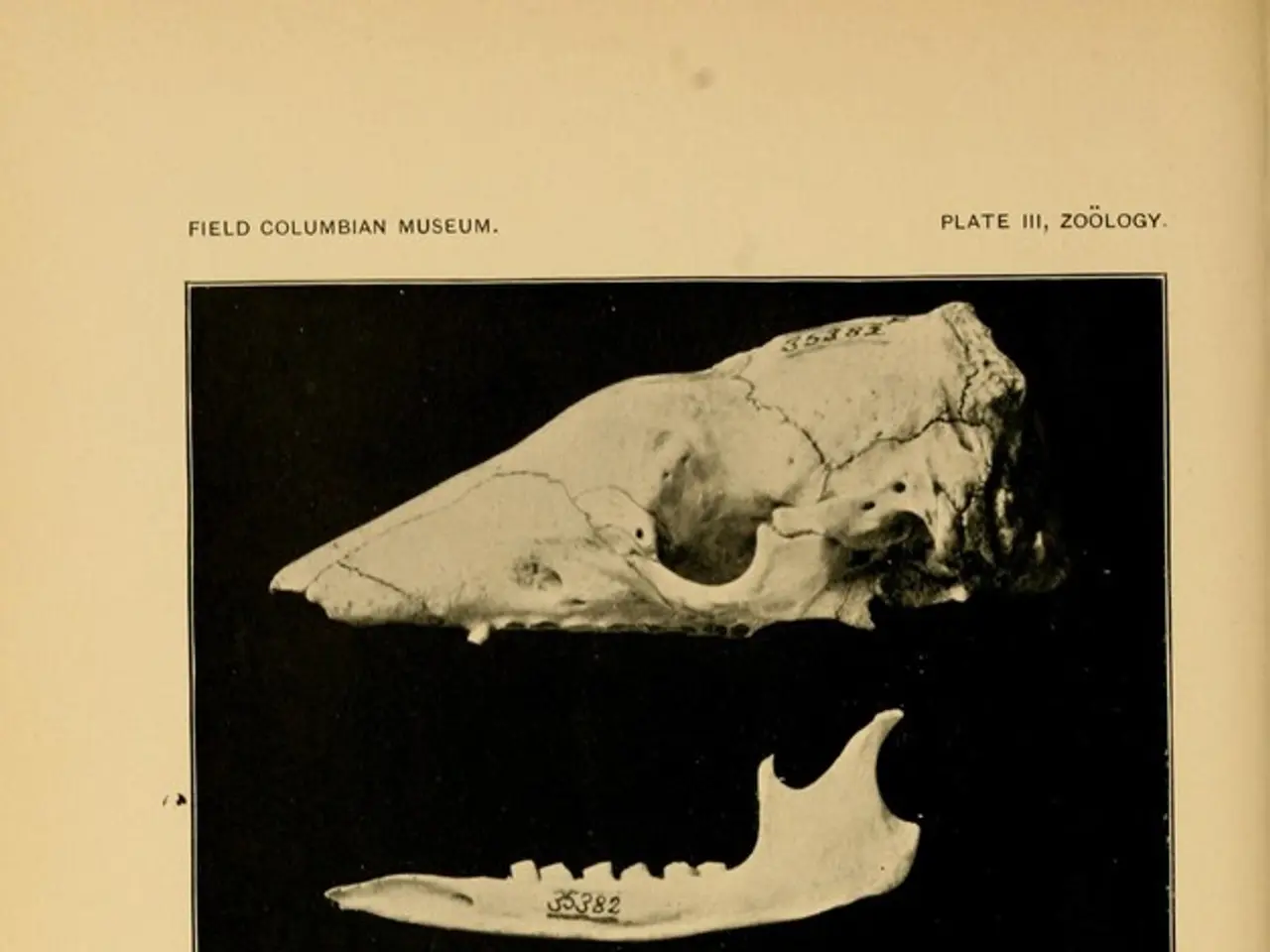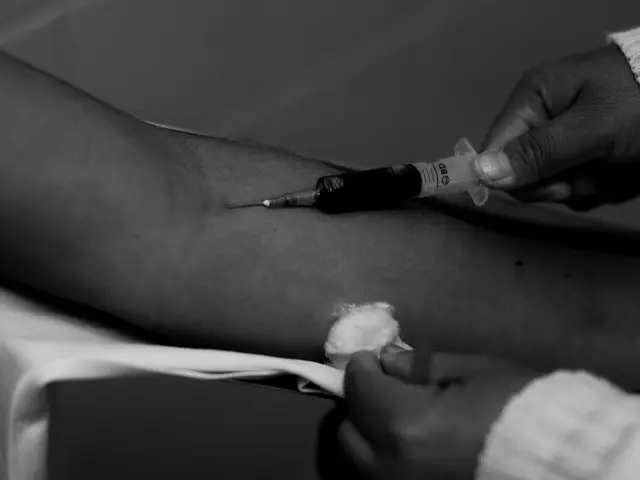Managing pain associated with osteoporosis: a guide
Osteoporosis, a bone condition that weakens the bones and reduces their density, often leads to two main types of pain: pain from fractures and chronic musculoskeletal pain.
Pain from Fractures
Vertebral Compression Fractures
Vertebral compression fractures in the spine are the most common osteoporosis-related fractures. These fractures can cause the vertebrae to collapse into a wedge shape, leading to an abnormal spinal curvature (kyphosis) and secondary muscle soreness and chronic dull aching pain.
Long Bone Fractures
Fractures typically occurring at the ends of the bones in arms and legs can be symptomatic, causing localized sharp pain at the bone ends.
Chronic Musculoskeletal Pain
Multiple vertebral fractures can lead to kyphosis (dowager's hump), which imposes abnormal stress on muscles and ligaments, causing long-lasting muscle strain, soreness, and dull lower back pain. This musculoskeletal pain can also contribute to reduced respiratory capacity and gastrointestinal discomfort due to rib cage compression.
Recommended Treatment Options
| Type of Pain | Treatment Options | Details | |------------------------------------|--------------------------------------------------|------------------------------------------------------------------------| | Acute vertebral compression fracture pain | - Pain relief medications (analgesics, calcitonin) - Activity modification - Back muscle strengthening exercises | Calcitonin can decrease pain caused by vertebral fractures. Analgesics like acetaminophen or NSAIDs may be used cautiously for pain control. Physical therapy focusing on back muscle strengthening helps relieve chronic back pain. | | Long bone fracture pain | - Standard fracture management (immobilization, pain medication) - Osteoporosis medications to promote bone healing | Long bone fractures typically require immobilization and analgesics. Osteoporosis-specific treatments, such as bisphosphonates, can support bone density improvement and fracture healing. | | Chronic pain from deformity and muscle strain | - Physical therapy and exercises - Pain management with analgesics or NSAIDs - Postural support and possibly bracing | Exercises to strengthen back muscles help alleviate chronic musculoskeletal pain. NSAIDs may be prescribed for inflammation and pain relief. Postural correction reduces stress on muscles. |
Additional Notes
- Analgesics: Acetaminophen is often used for pain relief without anti-inflammatory effects, with a maximum recommended dose of 4,000 mg/day. NSAIDs (e.g., ibuprofen, naproxen) reduce inflammation and pain but must be used carefully due to potential side effects.
- Calcitonin: Specifically indicated to reduce pain from vertebral fractures in osteoporosis.
- Physical therapy: Strengthening and conditioning of back muscles is a critical non-pharmacologic intervention to manage both acute and chronic osteoporotic pain.
In summary, pain in osteoporosis mainly stems from fractures (with vertebral compression fractures causing back pain and deformities) and subsequent musculoskeletal strain. Treatment involves tailored pain management (analgesics including calcitonin), fracture care, and physical therapy focusing on back muscle strengthening to reduce pain and improve function.
- Osteoporosis-related pain can stem from fractures, with vertebral compression fractures causing back pain and deformities, and long bone fractures causing localized pain at the bone ends.
- Chronic musculoskeletal pain, resulting from multiple vertebral fractures, can lead to long-lasting muscle strain, soreness, and lower back pain, as well as reduced respiratory capacity and gastrointestinal discomfort due to rib cage compression.
- Treatment options for acute vertebral compression fracture pain may include pain relief medications like analgesics and calcitonin, activity modification, and back muscle strengthening exercises.
- Long bone fractures are typically treated with standard fracture management, including immobilization and analgesics, along with osteoporosis medications to promote bone healing.
- Chronic pain from osteoporosis deformity and muscle strain can be managed through physical therapy and exercises, pain management with analgesics or NSAIDs, postural support, and possibly bracing.
- The management of osteoporotic pain should consider individual circumstances, such as the type of pain, the person's tolerance to medication, and the need for non-pharmacologic interventions like physical therapy.
- It's essential to remember that osteoporosis is a chronic disease that affects overall health and wellness, and maintaining mental health, fitness, and exercise can contribute to better management of the condition.
- Therapies and treatments for osteoporosis aim not only to alleviate pain and improve function but also to prevent fractures and promote sustainable health and fitness.




